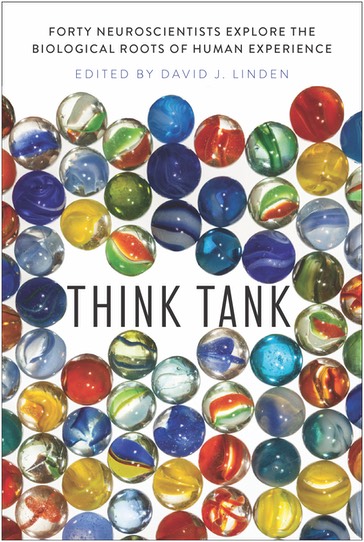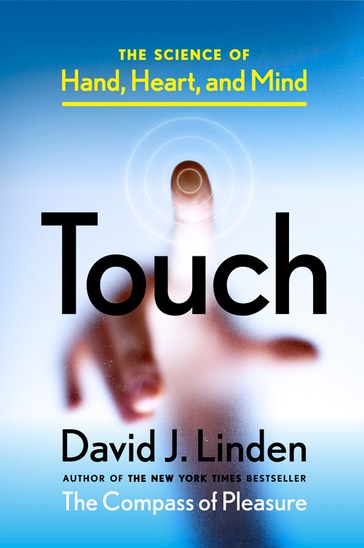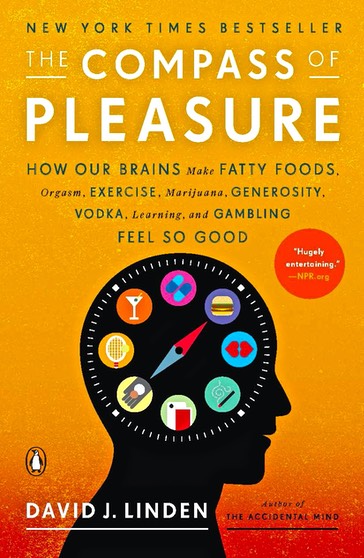Both animal and human studies have recently revealed a rather peculiar finding regarding pleasure and pain: Dopamine release from neurons of the ventral tegmental area (VTA), the central biochemical event of the pleasure circuit, is also engaged by painful stimuli. Jon-Kar Zubieta and his colleagues from the University of Michigan performed brain scanning to measure dopamine release in subjects who received a painful stimulus produced by continuously injecting a concentrated salt solution into the jaw muscle.[i] This treatment produced a protracted aching-type pain that lasted for about an hour. The control condition consisted of injecting a normal (isotonic) salt solution that is reported not to be painful. All subjects filled out surveys designed to assess both the emotional and sensory aspects of pain. The main result was that this long-term painful stimulus was associated with increased dopamine release in two central regions of the pleasure circuit: the dorsal striatum and the nucleus accumbens. In the nucleus accumbens, the greatest dopamine release was seen in those subjects who reported the highest emotional pain ratings.
How are we to interpret these findings? Isn’t the VTA–nucleus accumbens dopamine pathway supposed to be the core of the pleasure/reward circuit? In trying to make sense of this finding, it is worthwhile to remember that today’s brain scanning techniques are very crude. Even a single voxel (a three-dimensional pixel) in a brain scanning image is averaging the response of many thousands to millions of neurons spread over the course of many seconds, so that both the spatial and temporal resolution are very low. What happens when this sort of experiment is repeated in a rat, where electrodes can be inserted into the brain and recordings made from single dopamine neurons in the VTA? When Mark Ungless and his colleagues at Imperial College London recorded activity from single VTA dopamine neurons in response to a brief (four-second-long) painful foot shock, they found a very interesting result.[ii] While all of the dopamine neurons in the VTA were activated by rewards (like a syrup droplet), there were two different patterns of response to the painful stimulus. Dopamine neurons in the dorsal portion of the VTA were transiently inhibited by footshock: Their firing rate decreased below background levels. However, in the ventral portion of the VTA, dopamine neurons were transiently activated by the foot shock. Thus there appear to be two parallel circuits in the VTA. The first is the classic pleasure circuit that we have spent so much time discussing, and is activated by pleasure/rewards and inhibited by pain. The second is a “salience circuit” that is activated by both pleasurable and painful stimuli and is tightly coupled to emotional responses.
Does that mean that pain itself is somehow rewarding, or is it merely salient? The answer isn’t entirely clear and awaits further research. There are several factors that complicate any interpretations we might now make. For example, all brief painful stimuli eventually end, and the relief from pain we experience as they do end is itself pleasurable. Chronic, long-lasting pain is a somewhat different story, as it is likely to produce long-term changes in the brain’s pleasure circuitry through the action of stress hormones. It is tempting to speculate that the addition of pain to pleasure creates a super-salient response in the medial forebrain and that this somehow contributes to the popularity, in some quarters, of sadomasochistic sex, or even of tasty food loaded with chili peppers.
[i] Like a number of other studies, this experiment used radioactive raclopride as a tracer, a drug that selectively binds D2 type dopamine receptors. Scott DJ, Heitzeg MM, Koeppe RA, Stohler CS, Zubieta JK. Variations in the human pain stress experience mediated by ventral and dorsal basal ganglia dopamine activity. Journal of Neuroscience 26, 10789–10795 (2006).
[ii] Brischoux F, Chakraborty S, Brierley DI, Ungless MA. Phasic excitation of dopamine neurons in ventral VTA by noxious stimuli. Proceedings of the National Academy of Sciences of the USA 106, 4894–4899 (2009).



